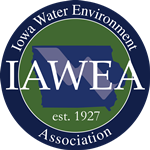What is Sewage Sludge?
Sewage sludge consists of water, dissolved solids, and suspended solids removed from municipal wastewater during the treatment process. Sludge solids contain plant nutrients, trace metals, organic chemicals, and inert solids often combined with complex organic compounds.
What is the difference between Sewage Sludge and Biosolids?
According to John Lear, former editor of the Saturday Review, "(Biosolids) are as different from sewage as broken eggs are to a home-baked cake." It is an appropriate comparison: The (biosolids) have been changed into a usable, safe product through careful processing.
How is Sewage Sludge converted into Biosolids?
Wastewater treatment plants are designed to remove solids and organic matter from sewage, resulting in a water which is clean enough to discharge into a nearby stream, river, or lake. The solids removed from the sewage are treated separately from the water.
The First Stage: Solids separated immediately after the sewage enters the treatment plant are referred to as "raw sludge." Sludge at this stage is not stable and should not be applied to agricultural soils without further treatment.
The Second Stage: The raw sludge is treated in digesters where it decomposed without oxygen (anaerobic) – something like fermentation – and becomes more stable. Decomposition can also take place with oxygen (aerobic). When sludge is digested it is more stable and is far less offensive than raw sludge. Digested sludge, or biosolids, can be applied to agricultural land. The biosolids removed from digesters typically contains from 1 to 10 percent solids. More water can be mechanically removed, producing biosolids containing between 16 to 22 percent solids.
The Third Stage: Biosolids may be further processed to a solids content of 50 percent or more. Biosolids may be composted with various bulking agents.
Nutrient Value of Biosolids
The nutrient value of biosolids can vary depending on its source, method of handling and processing, and the manner, timing and location of application.
The most important nutrients in biosolids are nitrogen, phosphorus, and potassium. Other nutrients that may be present include copper, calcium, magnesium, and sulfur.
One characteristic of biosolids used as a fertilizer is that it is a low-analysis fertilizer. This means that the nitrogen is released more slowly into the soil than commercial fertilizers.
Benefits of Biosolids
Biosolids, when properly treated and correctly applied, make an excellent soil conditioner and source of nutrients at a relatively inexpensive cost.

